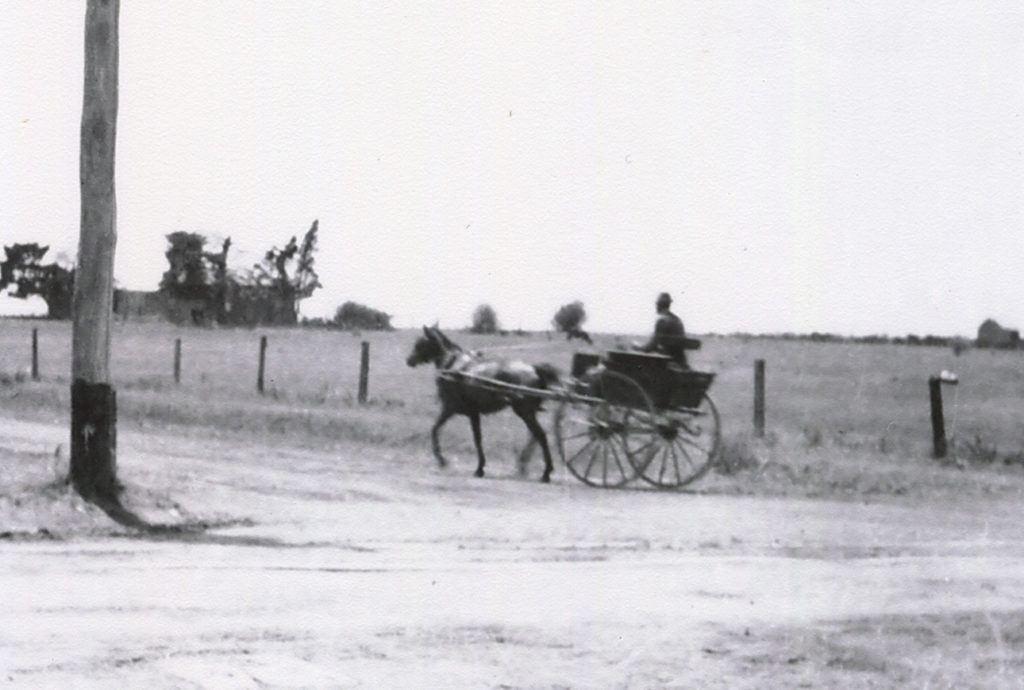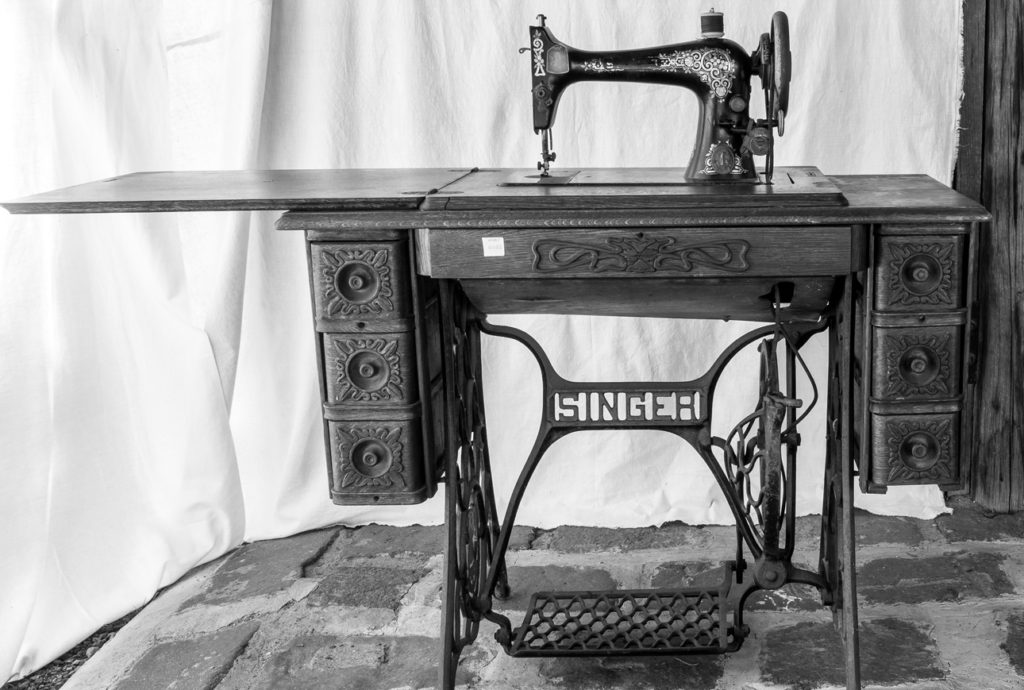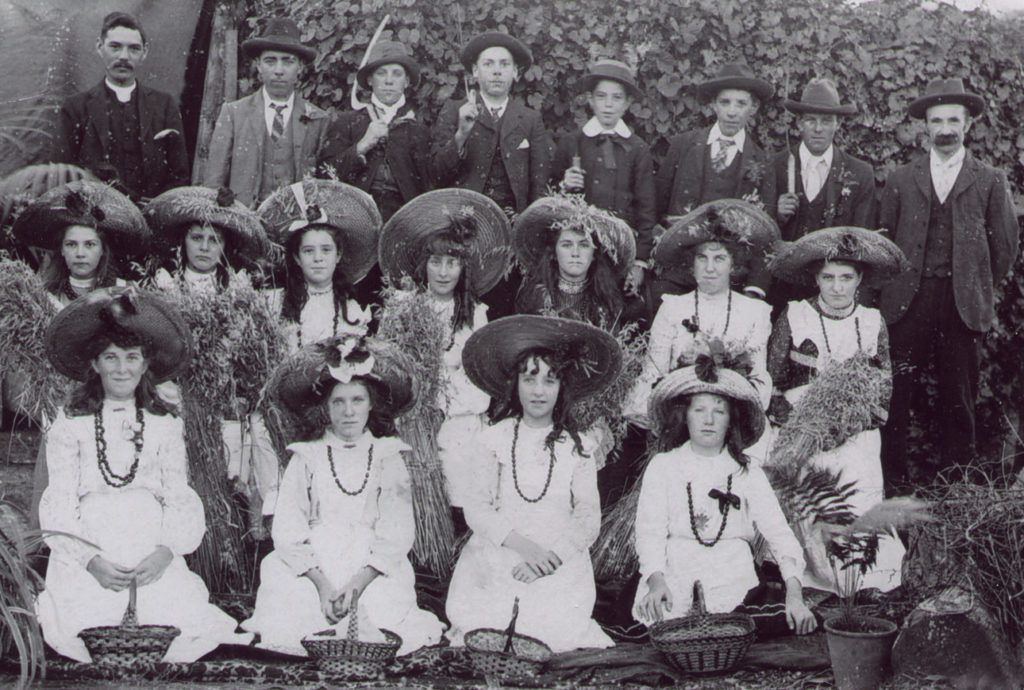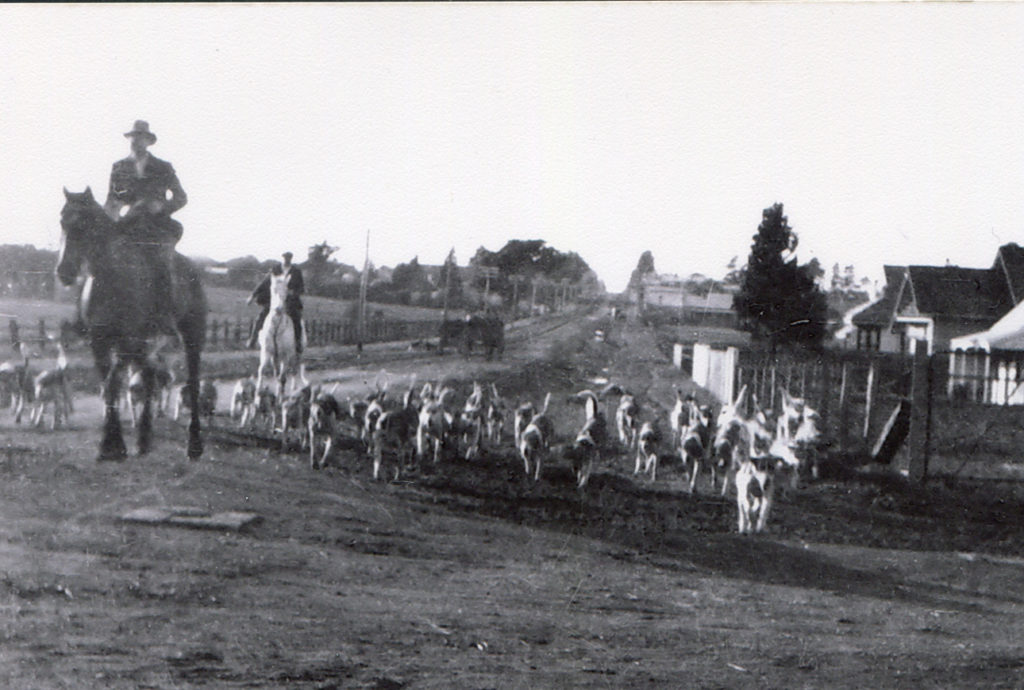Our Stories
The Sounds of Old Moorabbin
Extract from City of Moorabbin Historical Society Newsletter Vol. 13 No. 1 March, 1974
Close your eyes and imagine the sounds you would hear if you lived in Moorabbin in the eighteen-seventies.
It was a quiet place, old Moorabbin, back in the eighteen-seventies, a country of market gardens and orchards, of small dairy and poultry farms, of dirt roads, post and rail fences and timber houses. Here and there were little clusters of shops and churches and the occasional brick home surrounded by English trees or an imposing hedge. No trains, cars, trucks or aeroplanes disturbed the quietness but there were gentler sounds characteristic of the life of the people. Let us listen to some of them.
Perhaps the most noticeable was the clop-clop of horses and the creak of carts and wagons, buggies and jinkers. The horse and human feet and the occasional bicycle were the only means of transport; horses pulled the vegetables, fruit, butter and eggs along the sandy track which was to become the Nepean Highway to the markets in Melbourne. For by the seventies it had been clearly established that the growing of vegetables was a profitable industry in Moorabbin. The trot and canter of ponies carrying children to school could be heard. And with the horses and vehicles was associated that most important place, the blacksmith’s shop. One of these, owned by Percival White stood at the corner of “Point Nepean Road” (it was earlier called ”Main Road” and Schnapper Point Road”) and South Road; there was another in Cheltenham. Here carts and buggies were built and repaired, and horseshoes made and fitted; the ring of the hammer on the anvil and the roar of the bellows encouraging the fire charmed the children on their way to school.

The local grocer, Mr Corstorphans, returning home in McKinnon Road after making his deliveries. He has just turned into Tucker Road from South Road, Moorabbin. C 1915
There were dogs too; some were pets; some worked at bringing home the cows and horses; their barking mingled with the cheerful sounds of roosters, hens and ducks on the poultry farms and, on the dairy farms, the mooing of cows and grunting of pigs reared on the skim milk. And there was the jerky noise of the pump at the well or, on windy days, the spinning of the windmill that brought to the surface of the ground the water so necessary for humans, animals and birds.
Indoors where families were larger than today and often included one or two grandparents life was noisier in one way but quieter in others. There was no shrill summons from the telephone, no drone of vacuum cleaner or fan, no whirring electric mixer, no radio or television. But there was the sound of that blessed invention, the sewing machine; the heavy treadle model we smile at today was in constant use, for there was little ready-made clothing for sale. Mothers often sewed till late at night when children were in bed.

The Singer Sewing Machine on display at Box Cottage.
The sound of the cheerful crackle of burning wood from the open fire and the black iron stove and on the latter the thud of heavy flat irons. The clock was more important than today; its loud tick and heavy striking of the hours were part of life; if Father forgot to wind it on Saturday night the family might be late for church next morning or the children for school on Monday. Some homes had that status symbol, a piano; with an occasional violin or accordion it provided the only music at home before Thomas Edison’s wonderful gramophone reached Australia.
And where people gathered there were of course human sounds: the singing of hymns in the churches and the chatter of conversation after the service; the cries of children, as today, in the schoolgrounds; the applause for the songs and recitations and “dialogues” (short plays) at the Sunday School concerts and church socials and musical competitions (organized for a few years by the Australian Natives Association). There was the music of local bands at the processions arranged by the Friendly Societies and on other occasions and the merry noise of picnickers going by “drag” (a lorry drawn by several horses) to the beach or far-away places like Fern Tree Gully!

Methodist Sunday School pupils on Harvest Thanksgiving Sunday, early 1900’s.
Sometimes there was that wonderful thing, a circus. Children gathered where the big top rose, felt a thrill of fear at the noise of lions and tigers and when the show began clapped. and shouted themselves hoarse at the antics of the clown and the glittering girls.
A familiar sound in the seventies was the “bang bang” of the guns of the game-shooters. Hares and rabbits were plentiful in parts of Moorabbin; there were snipe and quail in “favourable spots”. These of course were all migrants, as were the foxes which were numerous enough by the 1880’s for the Melbourne Hunt Club to make Cheltenham one of its favourite meeting places.

Oakleigh Hunt Club and hounds at the corner of Centre and Jasper Roads, Bentleigh. c. 1920
There was another group of sounds in old Moorabbin which have almost gone today: the songs of native birds. Among the gums and wattles and tea tree and the English trees planted by homesick settlers lived the magpies and kookaburras and wrens and honey-eaters and parrots. And with them by the eighteen-seventies were those most adaptable of migrants – the sparrows and starlings. They were in fact too adaptable; the market gardeners’ complaints of their onslaught on seeds and young plants made the Council Ranger who controlled the land not privately owned offer l penny (1¢) per dozen for sparrows’ eggs and 3 pence (3¢) for those of starlings and mynahs. Today it is rare and delightful to hear a magpie or a kookaburra; perhaps we are lucky to have in our gardens the beautiful song of the blackbird and the cheerful noises of those other well-settled Australians whom no noisy city can drive away.